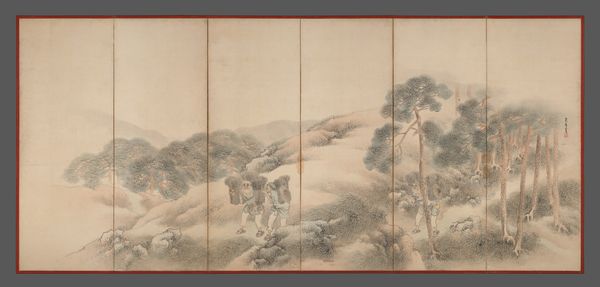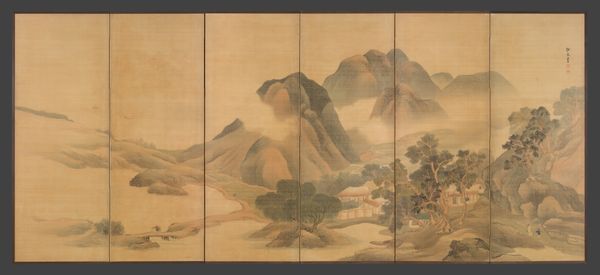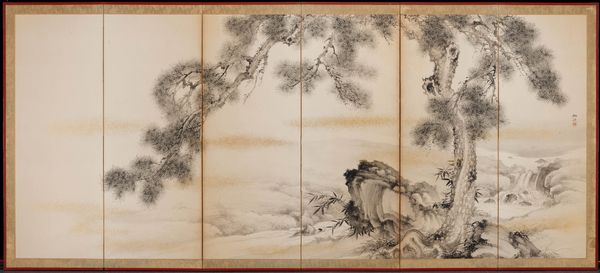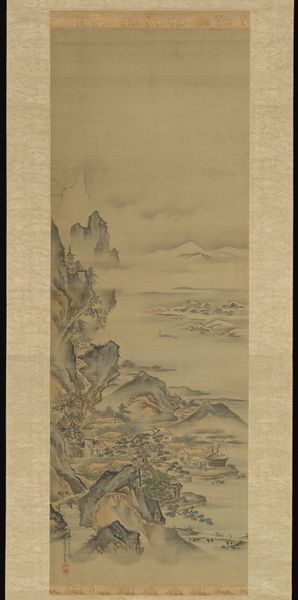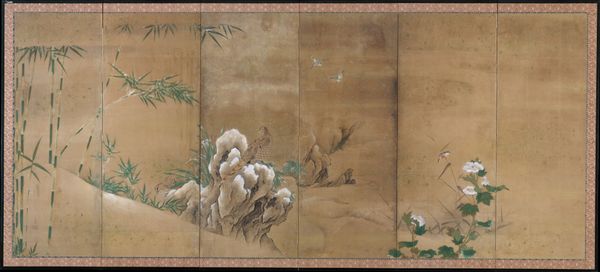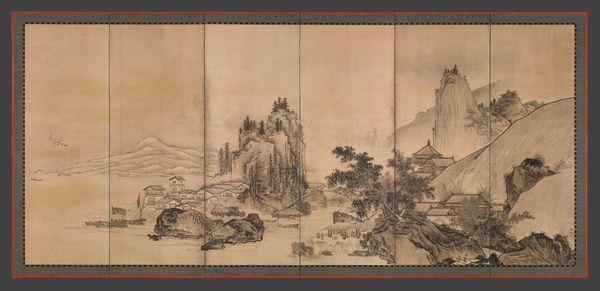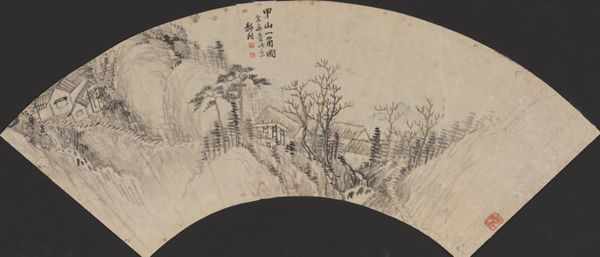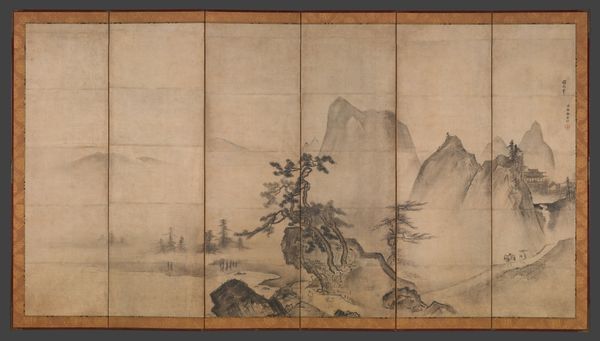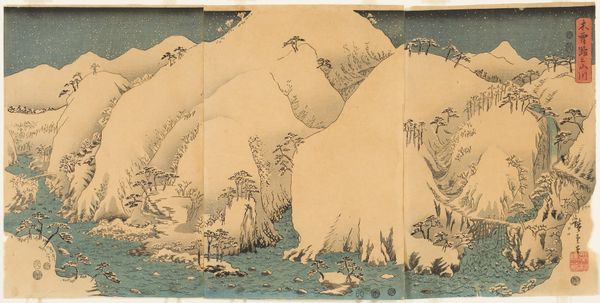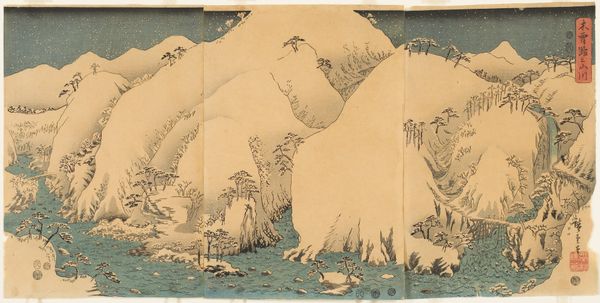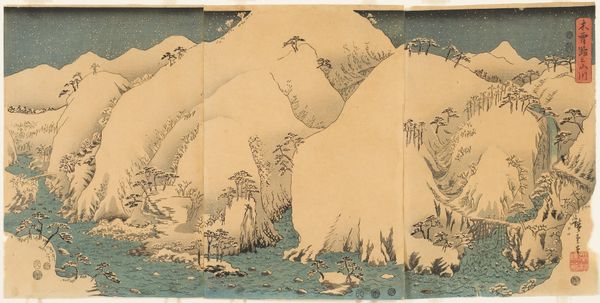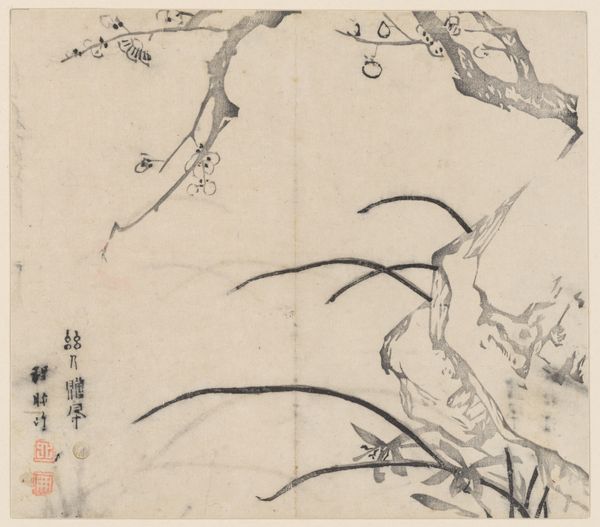
painting, paper, ink
#
faded colour hue
#
snow
#
pale palette
#
muted colour palette
#
pale colours
#
painting
#
light coloured
#
dog
#
asian-art
#
landscape
#
white palette
#
ukiyo-e
#
paper texture
#
japan
#
figuration
#
paper
#
ink
#
muted colour
#
pale shade
#
genre-painting
#
soft colour palette
Dimensions: Image: 66 7/16 × 72 1/16 in. (168.7 × 183 cm) Overall with mounting: 68 × 74 5/8 in. (172.7 × 189.6 cm)
Copyright: Public Domain
Curator: Here we have Nagasawa Rosetsu's "Puppies in the Snow," created sometime between 1792 and 1799. It's ink on paper. What's your first take? Editor: It’s a delicate whisper, isn't it? The barest suggestion of a winter landscape... almost ethereal. Like a forgotten dream captured in pale shades. It's making me feel chilly. Curator: The pale, almost monochromatic palette, contributes significantly to the representation of snow. Notice how the artist uses subtle gradations of ink to define form and space. This speaks volumes about Japanese aesthetics of reduction and essentialism. Editor: And those little rascals, the puppies, seem so carefree! Rosetsu really captured a sense of playful energy, even within such a restrained composition. Almost like watching ghosts having a frolic in a Zen garden covered with snow... paradoxical, yet very cool. Curator: Indeed. Consider the positioning of the puppies. One cluster on the left panel engages directly, while those on the right seem to move toward the blank space, which invites the viewer to ponder the subtle balance within a landscape painting, and Rosetsu's adept manipulation of space. Editor: You know, I'm drawn to how much is *not* there, and that muted palette works to create an image of impermanence, which aligns well with the ukiyo-e tradition. It really exemplifies the whole "floating world" vibe! Curator: The minimalist ink strokes not only represent physical form, but also reflect an economy of means—a core principle within the wider context of Japanese art that often transcends mere representation. Editor: This piece...it lingers, doesn't it? Like the echo of a haiku after a snowfall. A quiet meditation on the transient nature of beauty. Curator: Precisely. Its starkness, which might initially seem simple, embodies sophisticated concepts concerning space and materiality. There is such clarity of form that lends "Puppies in the Snow" lasting relevance.
Comments
No comments
Be the first to comment and join the conversation on the ultimate creative platform.
